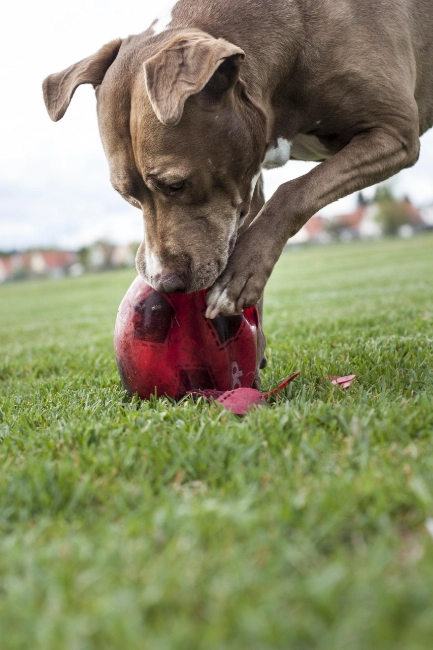Separation Anxiety in Dogs? Try These Vet-Backed Natural Calming Methods

-
How to help a dog with separation anxiety?
- Understanding Dog Anxiety: Causes, Solutions, and How Pawbiotix Can Help
- Separation Anxiety: The Most Common Form of Canine Stress
- One of the most prevalent anxiety disorders in dogs is separation anxiety. When left alone, some dogs experience extreme stress, leading them to destroy furniture, attempt to escape, or vocalize excessively. Studies indicate that separation-related behaviors are often seen in dogs that exhibit an overly strong attachment to their owners. Signs that a dog may be experiencing separation anxiety include:
- How to Calm Dog Anxiety Naturally
-
-
Disclosure: Some of the links in this article may be affiliate links, which can provide compensation to me at no cost to you if you decide to purchase. This site is not intended to provide financial advice and is for entertainment only.
How to help a dog with separation anxiety?
Understanding Dog Anxiety: Causes, Solutions, and How Pawbiotix Can Help
Dog anxiety is a common issue that affects many pets, leading to unwanted behaviors such as excessive barking, destructive chewing, and even self-harm. Just like humans, dogs experience anxiety for various reasons, including past trauma, lack of socialization, sudden routine changes, or separation from their owners. Research suggests that dogs who come from shelters, were separated from their litter too early, or have a history of instability are more prone to developing anxiety-related behaviors.
The bond formed between dogs and their human owners is consistent with an attachment. The emotional attachment between adult dogs and their owners, even in the absence of separation-related behavior problems, has been found to be similar to that displayed by human adults and their children.This is not surprising given that dogs have been selected for their dependence on humans over 10,000 or more years of domestication.
dogs with separation-related problems will often show signs of excessive attachment to their owners.For example, dogs may follow their owners around when they are home, and when their owners are preparing to leave the house .(PubMed)
Signs of anxiety in dogs:
Excessive whining or barking
Pacing or restlessness
Destructive behavior (chewing furniture, tearing objects apart)
Attempts to escape or hide
Trembling, salivating, or excessive panting
Inappropriate urination or defecation
Understanding what causes anxiety in dogs is the first step to helping them feel safe and secure.
Separation Anxiety: The Most Common Form of Canine Stress
One of the most prevalent anxiety disorders in dogs is separation anxiety. When left alone, some dogs experience extreme stress, leading them to destroy furniture, attempt to escape, or vocalize excessively. Studies indicate that separation-related behaviors are often seen in dogs that exhibit an overly strong attachment to their owners. Signs that a dog may be experiencing separation anxiety include:
Following the owner constantly when they are home
Becoming anxious when noticing pre-departure cues (grabbing keys, putting on shoes, etc.)
Whining, barking, or scratching at the door as soon as the owner leaves
Interestingly, research suggests that dogs from shelters or those who were separated from their litter before 60 days old are more prone to developing separation anxiety (PubMed). If you’re considering adopting a new pet, check out 10 Tips for a Successful Pet Adoption to ensure a smooth transition.
When left alone, dogs can cause much damage to a home, and injure themselves in the process. Overall21 described a dog who destroyed drywall, tile, and insulation in a home. This dog tore its tongue, broke teeth, and suffered cuts to its face and feet. A dog with separation-related problems in a study by Gaultier et al7 ate part of the home electricity supply, setting fire to the house in its owners’ absence.
How to Calm Dog Anxiety Naturally
Fortunately, there are many ways to help manage anxiety in dogs. The most effective approach involves behavioral training, environmental enrichment, and, in some cases, natural supplements like probiotics. Here are some scientifically backed strategies to ease anxiety in dogs:
1. Behavioral Training
Behavior modification is one of the most successful methods to treat separation anxiety. A process called systematic desensitization and counterconditioning gradually helps dogs adjust to being alone. This involves:
Leaving the house for short periods and slowly increasing the time away
Creating positive associations with departures (giving treats before leaving)
Avoiding punishment, as it can increase anxiety
2. Environmental Enrichment
Keeping a dog mentally stimulated can significantly reduce anxiety. Some ways to engage a dog's mind include:
Providing puzzle toys to keep them busy
Increasing daily exercise to burn excess energy
Offering a comfortable, safe space to retreat when feeling stressed
For more tips on proper nutrition and feeding habits, read Best Types of Dog Food and Dog Feeding Mistakes You Should Avoid and Are Bones Safe for Dogs?.
3. Using Natural Supplements: How Pawbiotix Helps with Anxiety
Did you know that a dog’s gut health is directly linked to its brain function? Research has found that probiotics can play a crucial role in reducing anxiety-related behaviors by improving gut microbiota. Pawbiotix, a high-quality probiotic supplement for dogs, contains essential ingredients that support not just digestive health but also mental well-being.
Key Ingredients in Pawbiotix That Help Dogs with Anxiety:
Lactobacillus strains: These beneficial bacteria improve gut health and have been linked to reduced anxiety behaviors in dogs.
B vitamins: Help regulate neurotransmitters responsible for mood stability.
Prebiotics: Support healthy digestion, which is crucial since gut imbalances are often linked to stress and anxiety.
Since anxiety and stress are associated with inflammation in the body, keeping a dog’s gut balanced with Pawbiotix may help ease anxiety symptoms naturally. This makes it a great addition to other behavioral and environmental interventions.
A Holistic Approach to Treating Dog Anxiety
Dog anxiety is a complex issue, but with the right approach, it can be managed effectively. By combining behavioral training, environmental enrichment, and natural supplements like Pawbiotix, you can help your furry friend lead a calmer, happier life. If your dog struggles with anxiety, try addressing their gut health along with their emotional needs—it could make all the difference!
-
How to help a dog with separation anxiety?
- Understanding Dog Anxiety: Causes, Solutions, and How Pawbiotix Can Help
- Separation Anxiety: The Most Common Form of Canine Stress
- One of the most prevalent anxiety disorders in dogs is separation anxiety. When left alone, some dogs experience extreme stress, leading them to destroy furniture, attempt to escape, or vocalize excessively. Studies indicate that separation-related behaviors are often seen in dogs that exhibit an overly strong attachment to their owners. Signs that a dog may be experiencing separation anxiety include:
- How to Calm Dog Anxiety Naturally
-
-
Disclosure: Some of the links in this article may be affiliate links, which can provide compensation to me at no cost to you if you decide to purchase. This site is not intended to provide financial advice and is for entertainment only.





